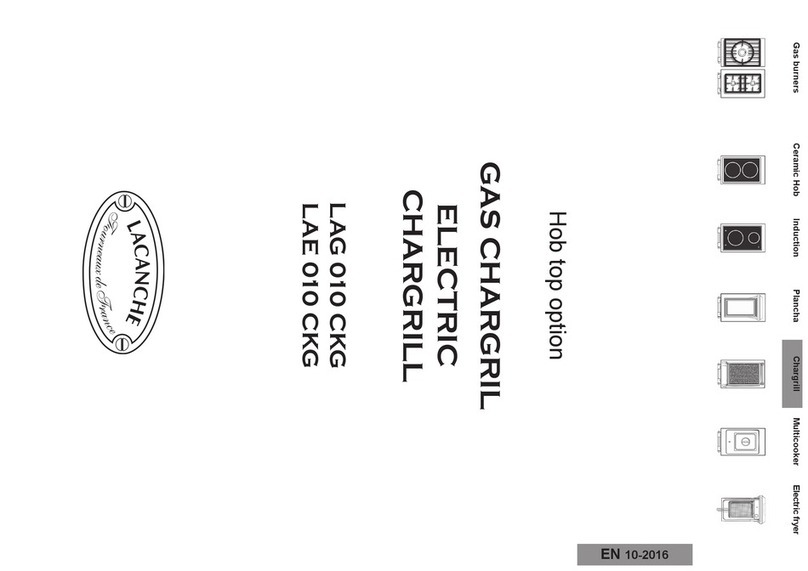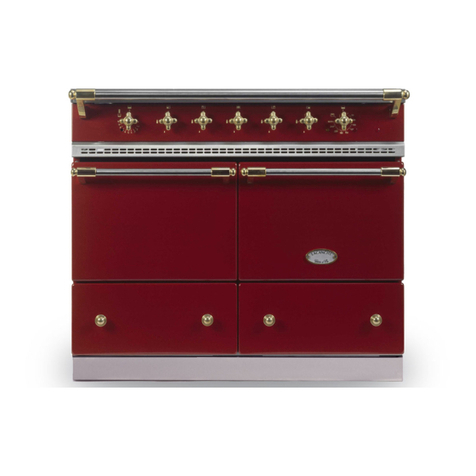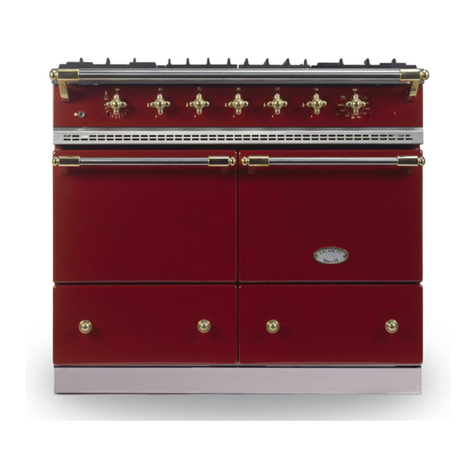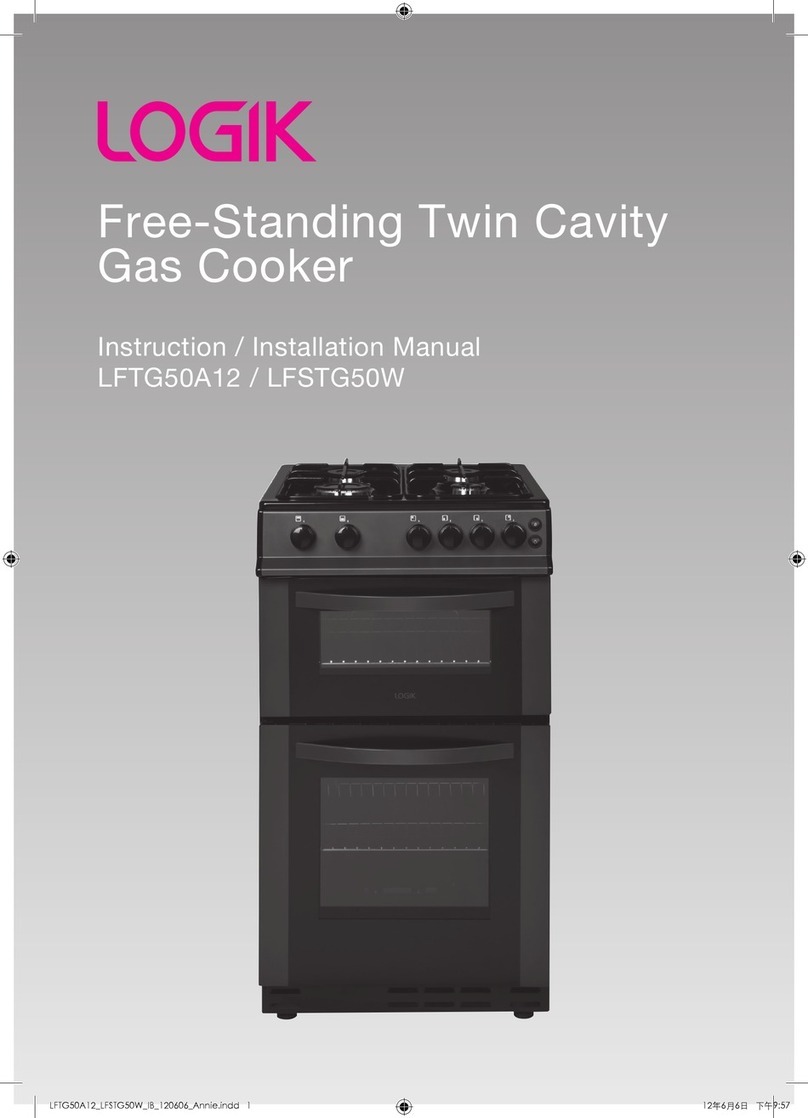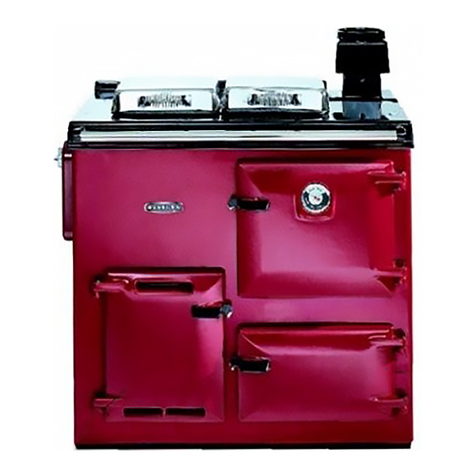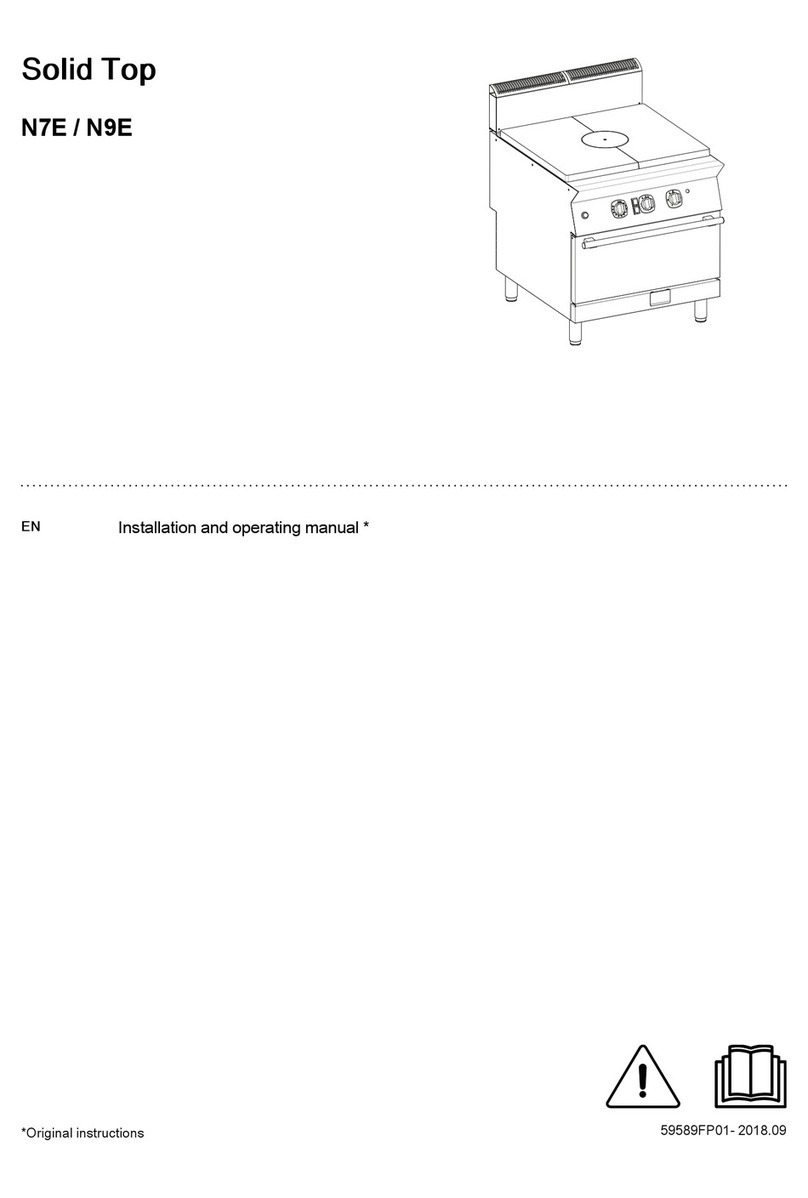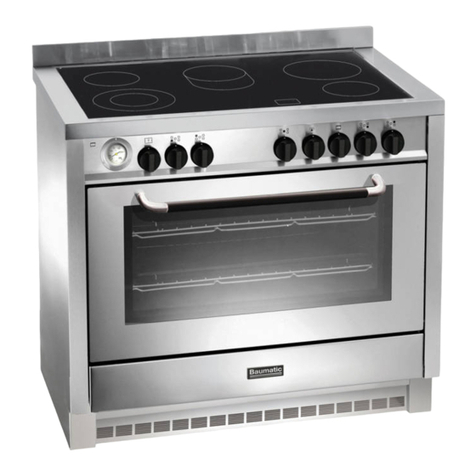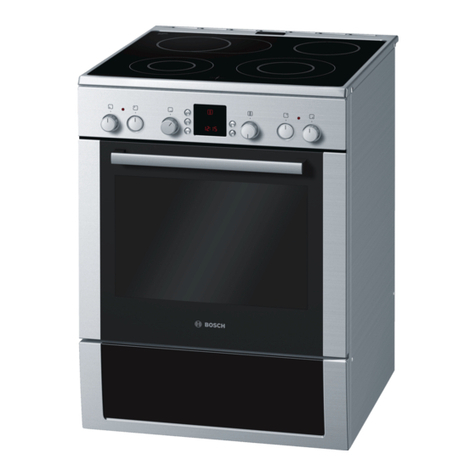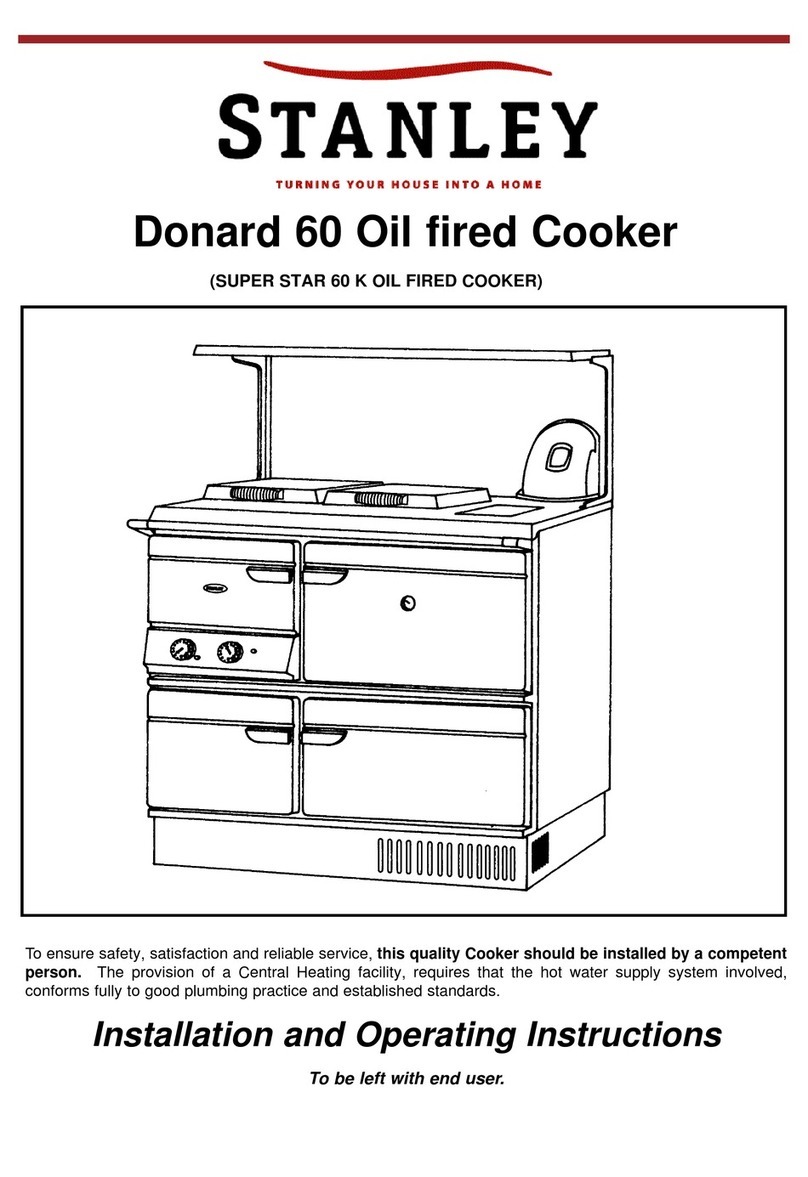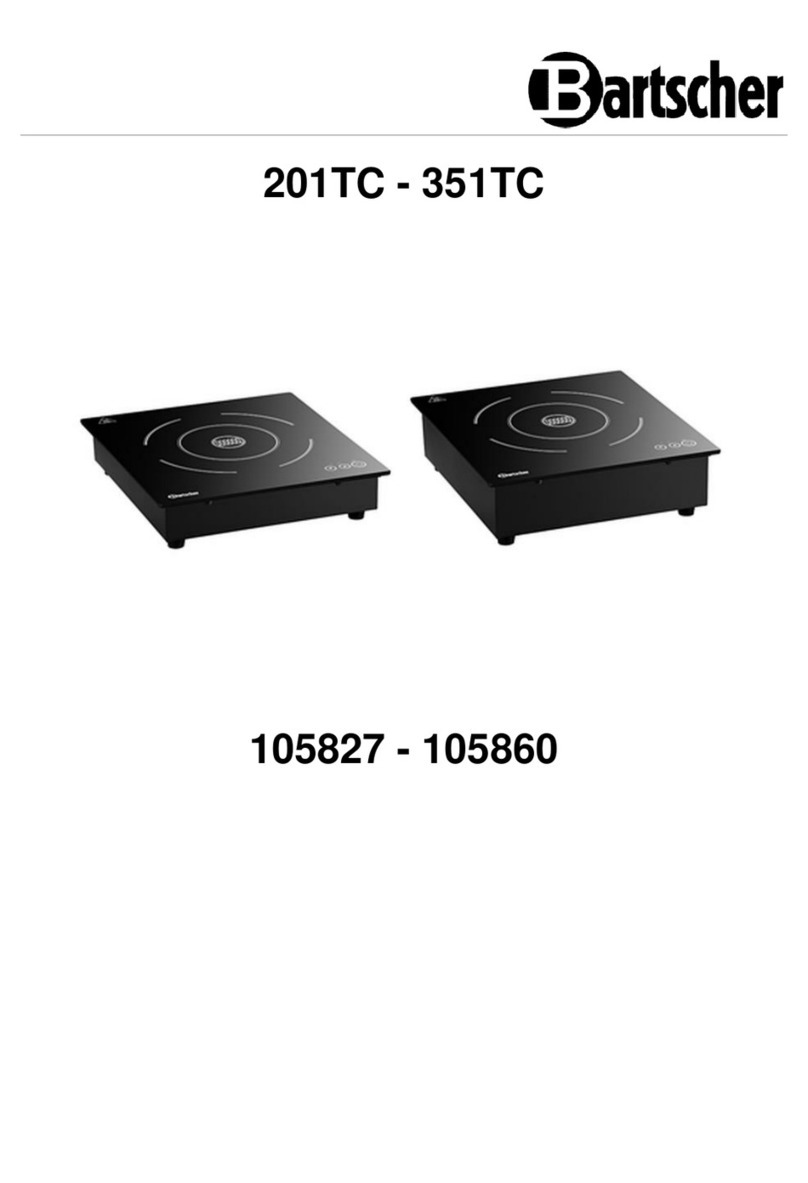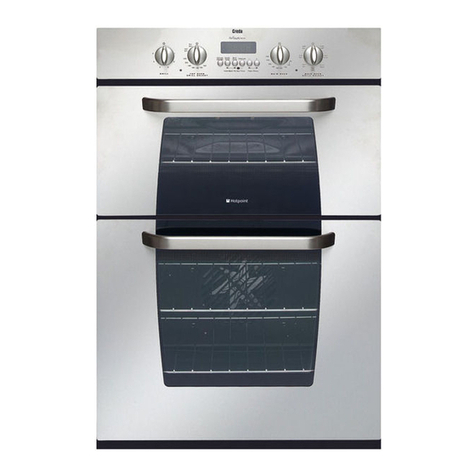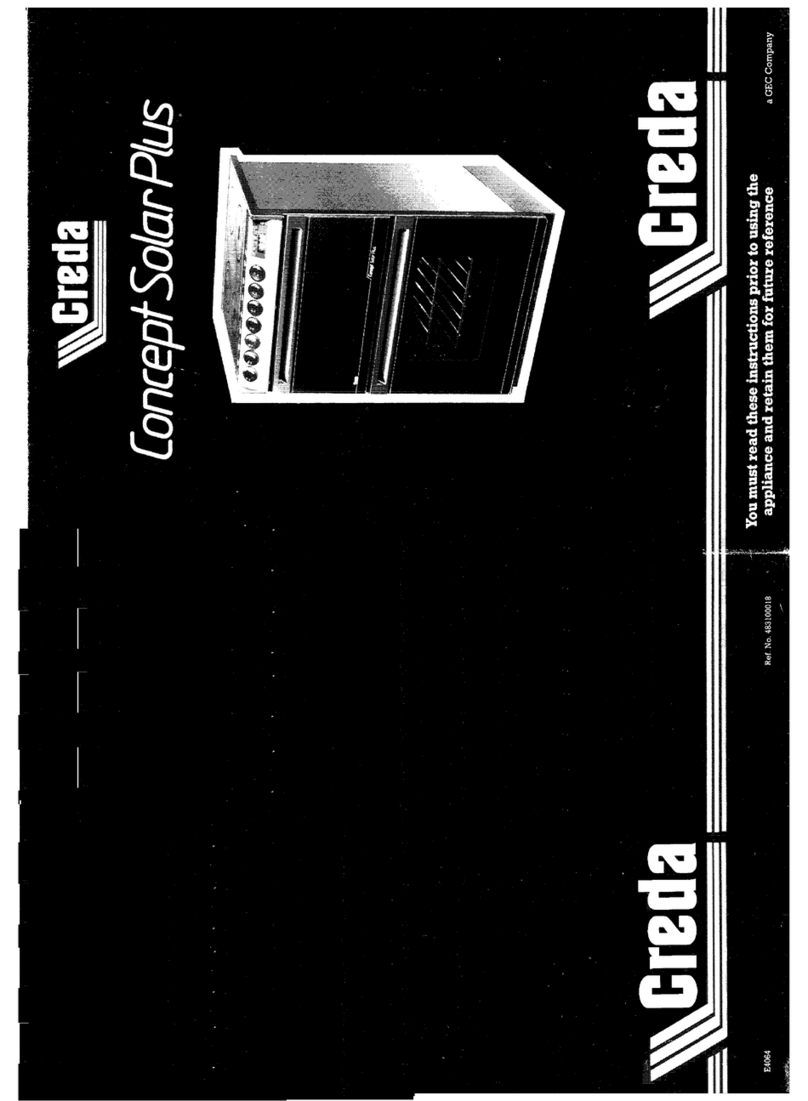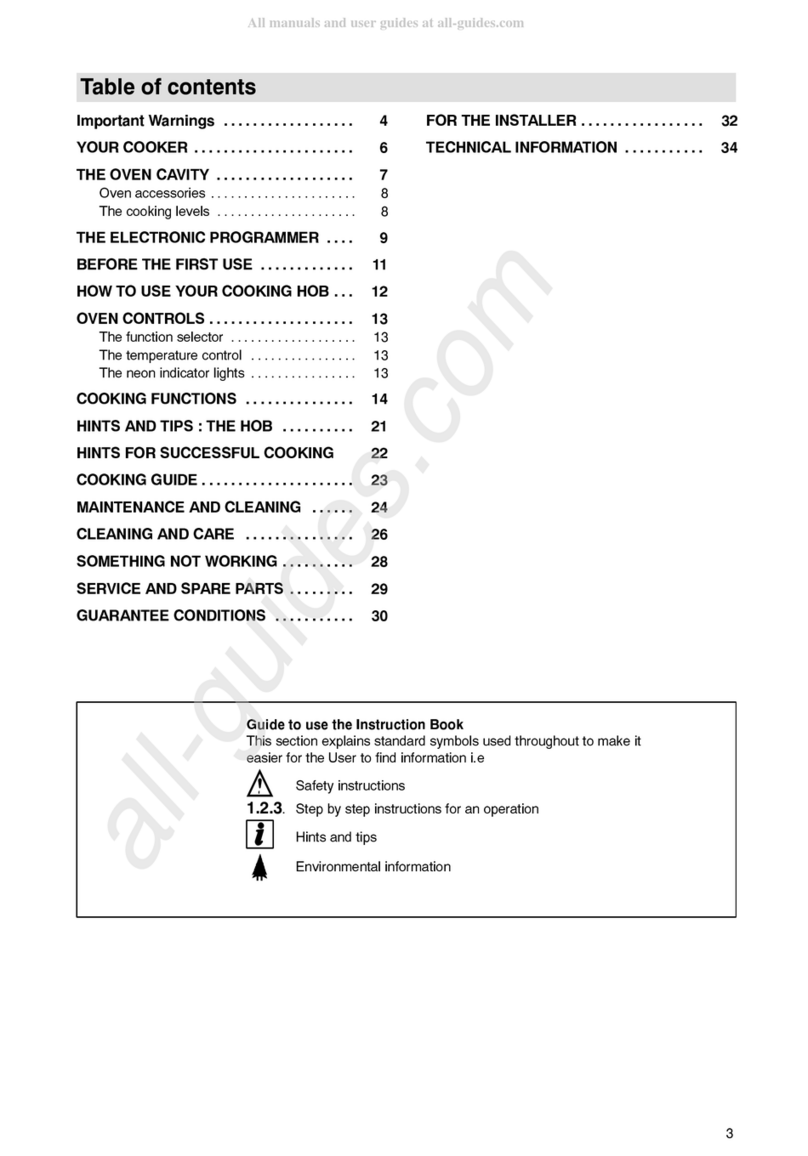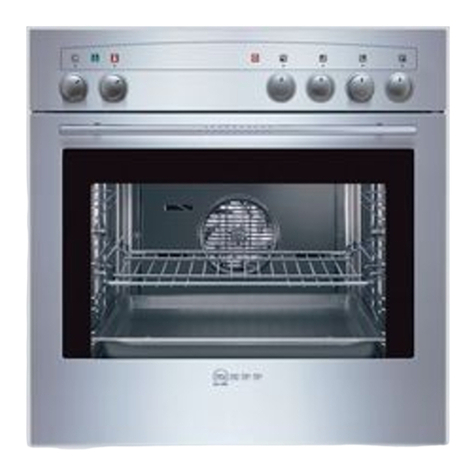Page 7 of 17 –US –
Adjustment of reduced flowrate of surface burners (Figure 23):
After connection or change of gas, it is crucial to modify this
adjustment.
- Remove the control knob. Light the burner, adjust to
minimum setting, then use a small screwdriver to set the
adjusting screw J.
Note: Flame is reduced to ¼ of its size in the minimum
setting, the burner must remain lit when changing from
maximum setting to minimum setting.
Refitting the cooking surface:
When refitting the cooking surface, it is vital to tighten
fastening screws (figures 4, 5 and 6). Failure to do so can
cause distortion of the cooking surface.
OVEN BURNERS:
Disassembling of the gas oven burner:
Withdraw the plate (Fig.15).
CAUTION: when refitting, place the base front underneath the groove on the fascia (fig.16).
Unscrew screw Kholding the burner (Fig.17).
Remove the drawer.
Unscrew the two flathead screws L(Fig.17). Remove screen under gas oven.
Unscrew screw Mon the orifice holder (Figure 19).
Push the burner towards the back of the oven cavity and to raise it to release it.

